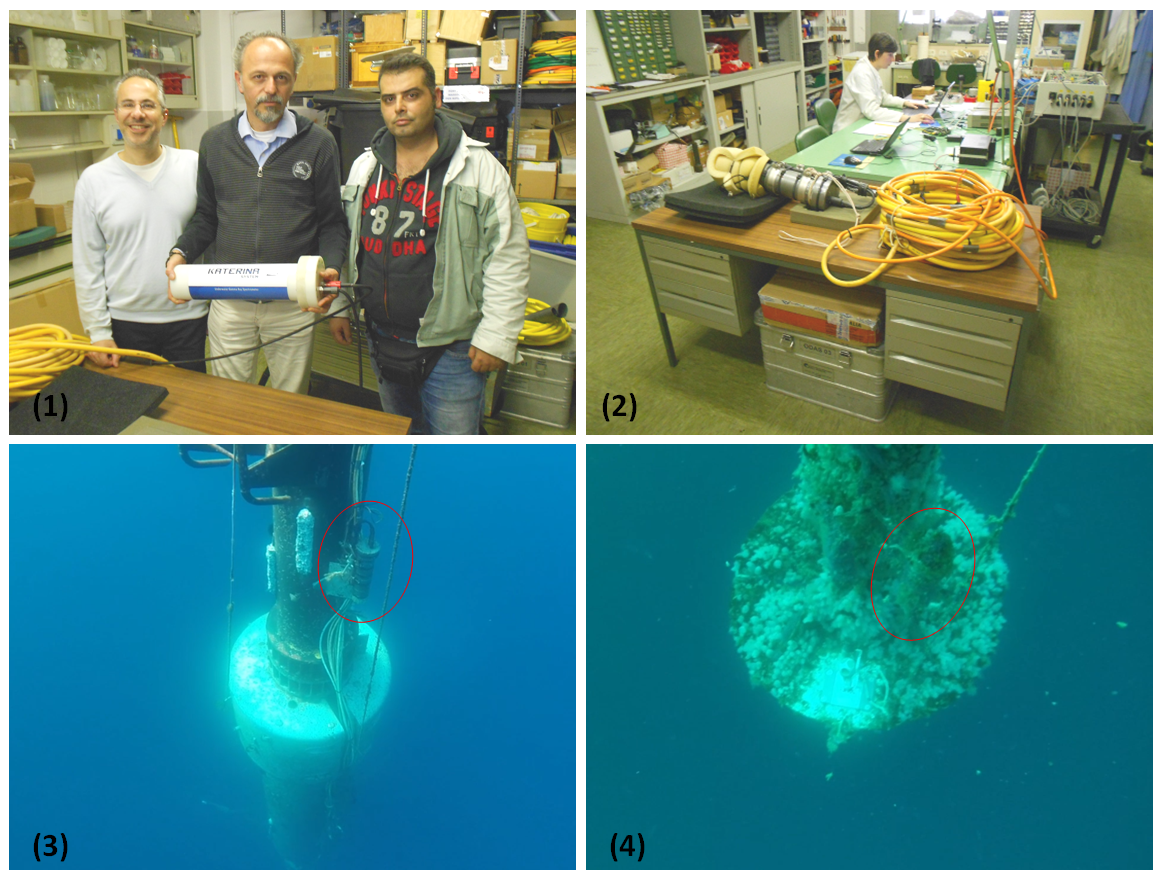Underwater sound and radon measurements of rainfall and wind at sea
A long-term experiment was setup to install two complementary new instruments on the W1M3A observatory in the Ligurian Sea. The scientific aim of the experiment was to understand and characterize the distribution and pattern of oceanic wind fields and rainfall which constitute some of the major components of global/regional water cycle and climate change. One instrument is an autonomous underwater in-situ radioactivity sensor based on gamma-ray spectrometry which measures artificial (like iodine and caesium) and natural (like radon and thoron) radioactivity. The continuous monitoring of gamma radiation in the marine environment provides significant information on various environmental processes where radon and thoron can be applied as a tracers. Radon can be detected via its daughters (214Bi and 214Pb) which are gamma-ray emitters. 222Rn is a noble gas and is found in aerosol particles in accumulation-mode. It has been observed qualitatively after rainfall from the short-lived radon daughters (214Bi and 214Pb). However, the variation of radon activity is not constant mainly due to rainfall intensity, rainfall type and humidity. It has been measured that volumetric activity of radon decay products in rainwater amounts up to 105 Bq/l. The other instrument is a smart acoustic recorder which can be used to detect and classify rainfall type and quantify the wind speed, rainfall rate and drop size distribution. The principle on which the sensor is based on is that rain drops falling into the ocean surface produce sound underwater by their impacts and, more importantly, by sound radiation from any bubbles trapped underwater during their splashes. In addition, because different raindrop sizes produce distinctive sounds, the underwater sound can be inverted to quantitatively measure drop size distribution in the rain., the break of the surface waves (strongly correlated to wind blowing over the sea) are two of the loudest sources of underwater sound. Additionally sounds generated from biological and human activities can be detected.

(1) A team from the Hellenic Center for Marine Research (HCMR, Greece) poses for a group photo holding Katerina, an autonomous underwater sensor for gamma-ray spectrometry, in the laboratory of the W1M3A observatory.
(2) Working in the laboratory to develop software and hardware interfaces for integrating new sensors into the W1M3A's on board payload.
(3) The autonomous underwater sensor for gamma-ray spectrometry deployed at 6 meters depth along the spar buoy.
(4) The underwater passive acoustic sensor deployed just above the damping disk of the spar buoy at about 36 meters depth.